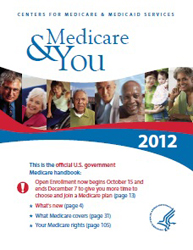MEDICARE BASICS: Covering Parts A, B, C and D
Medicare is a Federal Health Insurance Program for:
- People who are age 65 or older
- People under age 65 with certain disabilities
- People of all ages with end-stage renal disease (ESRD is permanent kidney failure requiring dialysis or a kidney transplant)
Original Medicare consists of Parts A and B only
Part A helps with costs associated with in-patient hospital stays, skilled nursing facilities, hospice, and home health care. Most people do not have to pay a premium for Part A. If you are a citizen and you or your spouse has worked 40 quarters, you are entitled to Part A. If you don’t reach certain requirements to receive premium free Part A, you can buy into it by paying a premium.
Part B helps with Doctor services and outpatient care. Part B requires a premium and it varies based on your income. For full-benefit dual-eligible members, the Part B premium could be paid by the State.
Notes: Premiums and deductibles are adjusted annually. The Part A deductible is not a calendar year deductible. After your treatment ends, and if you don’t utilize Part A for 60 days, your deductible resets and you are asked to pay another deductible.
Part B also has a deductible and it is adjusted annually. This is a calendar year deductible and is reset January 1st of the following year. Your financial exposure on most Part B services is 20% of the Medicare allowable amount after the deductible is met. There is no stop-loss or dollar amount where you stop paying.

Part C is also known as Medicare Advantage (MA and/or MAPD). It combines your Part A and Part B into one plan. You must have both Part A and Part B to be eligible for these types of plans. MA plans are offered by private insurance companies who are approved and regulated by the Centers of Medicare and Medicaid Services (CMS). Should you decide to insure with MA provider you are still in the Medicare program and are still required to pay your Part B premium. Just show your Doctor or the facility your MA card. Your Medicare card can be kept in a safe place.
Some key benefits to an MA or MAPD plan include their predictible out-of-pocket costs and stop-loss features. Unlike Original Medicare, the plan sets a maximium out-of-pocket to help contain your costs. Many plans come with extras too; such as dental, vision, hearing and fitness benefits.
The common network choices for a Medicare Advantage plans are:
- Health Maintenance Organization (HMO) Plans
- Preferred Provider Organization (PPO) Plans
- Private Fee-for-Service (PFFS) Plans
- Medical Savings Account (MSA) Plans
Part D is also known as a prescription drug plan or PDP. It covers prescription drugs at the pharmacy. All Medicare recipients who have Part A can choose a Part D plan. Having Part B is not mandatory. For most people, there is a premium associated with Part B and many Medicare Advantage plans come with Part D included. They are commonly known as MAPD which stands for Medicaid Advantage with prescription drugs.
To learn more about the Parts of Medicare, feel free to contact us, visit www.medicare.gov or view the Medicare and You handbook.

RTC Insurance Advisors offers various Medicare Advantage (MA and MAPD) and Part D (PDP) plan as well as Medicare Supplements. Contact us today so that we may help you find the most appropriate plan for your specific needs.
